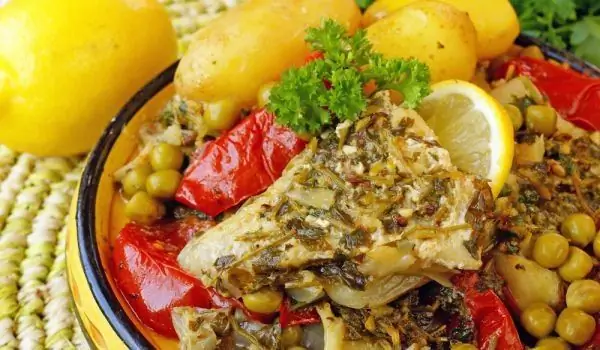2025 Author: Jasmine Walkman | [email protected]. Last modified: 2025-01-23 10:18
Unlike European cuisine, where chicken, pork and beef are among the most popular, the people of the Arab world rely mainly on lamb.
It is present at every table not only in the daily menu, but also for the major religious holidays. It can be prepared baked, stewed or fried, served in soup, stew, baked whole or in portions.
What distinguishes it from "our" cuisine is that it is prepared with a wide variety of aromatic spices and fragrant herbs. It is no coincidence that Arabic cuisine is known as the Cuisine of Fragrances because they are used in all forms - leaves, seeds, roots, fruits and flowers.
The traditional one is especially impressive with its taste shish kebab of lamb that you can see in any Arab street restaurant. Here's how you can transfer Arabic cooking skills to your own home:
Lamb shish kebab
Necessary products: 1 kg of lamb, 5 onions, 4 tomatoes, 1 green pepper, 1 red pepper, 2 cloves garlic, 2 cucumbers, 1 bay leaf, 100 ml lemon juice, 2 tablespoons vinegar, 270 ml olive oil, 2 yogurts, 3 sprigs of fresh mint, salt and pepper to taste.

Preparation: In a mortar, crush 1 clove of garlic with a little salt and mint leaves and add to this mixture yogurt and a few tablespoons of olive oil, stirring constantly until a homogeneous mixture. Diced cucumbers are added to the resulting sauce.
In another bowl, mix the remaining olive oil with the lemon juice and vinegar, then add the bay leaf, the other garlic clove, which is finely chopped, salt and pepper to taste.
The meat is cut into pieces and put in the prepared mixture of olive oil and spices for 5 hours to marinate.
Onions, tomatoes and peppers are cut into a suitable form for stringing skewers and after the time for marinating with these products has elapsed, the lamb skewers are made.
Bake on a grill or grill pan, turning on all sides and pour the remaining marinade. Serve warm with the prepared milk sauce.
Recommended:
Baharat - The Universal Arabic Mixture

Baharat is an Arabic universal blend of various spices that are typical of Middle Eastern cuisine. Just a pinch of the unique mixture changes beyond recognition the taste of various sauces, soups, cereals, vegetables, legumes and meat. It can be used for rubbing fish, poultry and others, mixed with olive oil and used as a vegetable marinade.
Famous Arabic Salads

Salads are very common in the Arab world, but what distinguishes them from European ones are the spices. There are no rules for mixing them, and in most cases a large amount of them is added to salads. Another characteristic of Arabic salads is that in their preparation, with the exception of coastal Arab countries, almost no fish is present as a product, but at the expense of it are very popular vegetable salads of eggplant, zucchini, bulgur and naturally a variety of spi
What Do You Not Know About Arabic Cuisine?

When we talk about Arabic cuisine , it should be borne in mind that it is necessary to distinguish itself from Muslim countries such as Turkey, Afghanistan, Pakistan, Iran, etc., because their cuisine obeys other rules and has preserved its own traditions.
Unknown Arabic Spices

The Arabian Peninsula is closely related to the topic spices throughout its history. They have been valued throughout the Middle East for their strong aroma and healing properties. The ability to properly mix flavors and flavor every bite of food has long since developed almost to perfection in this corner of the earth.
Spices In Arabic Cuisine

There is hardly anything more characteristic of Arabic cuisine than the skillful combination of different spices. Whether fresh or dried, they give the unique taste and aroma of all Arabic dishes. There are no strict rules for mixing them, and even pre-prepared mixtures containing more than 20 types of spices and aromatic herbs have been required.

